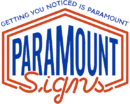Signs exist all around us. Have you ever wondered what type of materials signs are made of? For many people, thinking about signs only occurs when it’s time to purchase one for their space and they realize how little they know about signs, what they are called, or what materials they are made of.
Luckily, for business owners everywhere, there are some basic material types typically used for the majority of signage produced. Each material has specific features and benefits that fit a specific range of applications. This article will cover the “hard” materials used in sign fabrication. Commonly called substrates in the sign industry, these materials produce the sign itself.
Table of Contents
The 10 Materials that makeup the backbone of “Hard Signage”:
- Medium Density Overlay (MDO)
- Aluminum
- Aluminum Composites
- Acrylic
- High-Density-Urethane (HDU)
- PVC
- Magnet
- Banner
- Posterboard
- Laminated foam
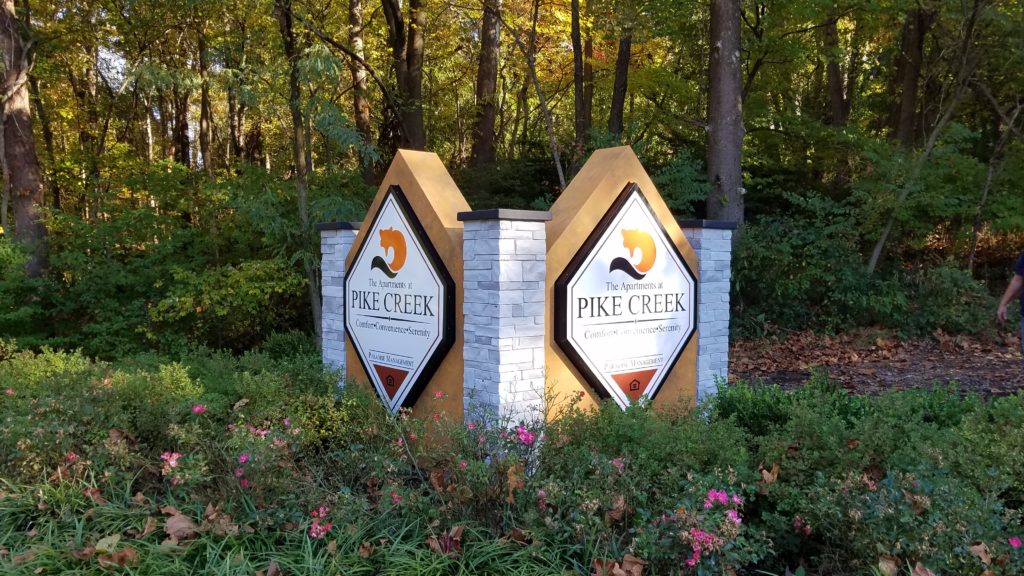
Sign materials for outdoor applications:
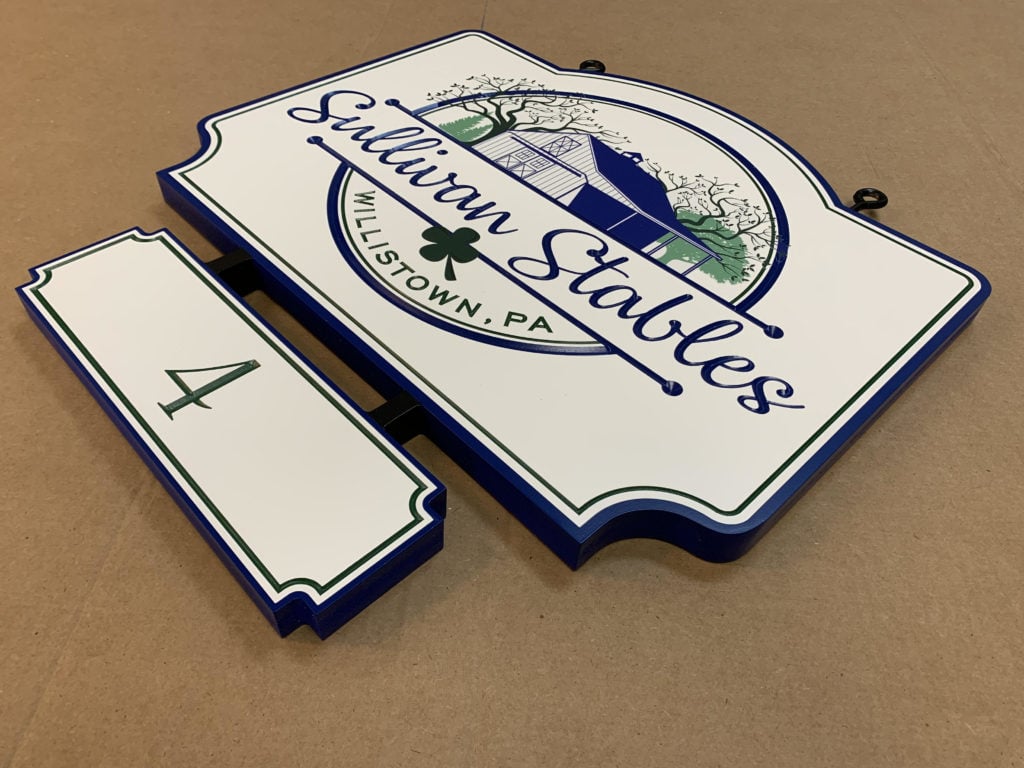
Medium Density Overlay (MDO) – MDO is typically known as plywood. It comes in various thicknesses as well as different adhesives for indoor/outdoor use. For outdoor use, you want an exterior grade product as it has a moisture-resistant adhesive for longevity in the outdoor environment.
Aluminum – One of the most durable and common materials used for fabricated signs, aluminum offers strength, corrosion resistance, and lightweight properties. Fabrication properties such as bending, cutting, and welding makes this material the primary choice for sign panels and sign cabinets where long-term durability is a priority.
Aluminum Composites – Composites offer both durability, strength, and lightweight properties. Although not quite as conformable as aluminum, it is a great option for certain applications.
Acrylic – Think of acrylic as a high-quality plastic that allows light to pass through. This material is used quite a bit for illuminated signs because of its translucency as well as light diffusion. Additionally, it comes in multiple colors including clear.
High-Density-Urethane (HDU)– This material has come to the signage scene as an option for various wood products at the time. It is essentially a hard foam material allowing the options for engraving and routing/carving for that 3D look. This dimensional look is hard to create in any other material.
PVC – PVC, is a plastic material that can be used for flat panels or carved. This material does not provide the same finish when carved as compared to HDU but offers a little more strength and durability.
Magnet – Magnetic material is mainly used for vehicle magnets, but also works well for signage that requires frequent changes.
Banner – Banners come in many shapes, sizes and applications. As such, they are a staple for temporary signage. Banners are budget-friendly and easy to install.
Sign materials for indoor signage:
PVC– Due to the durability of PVC material, it is often used both interiorly and exteriorly. PVC is a tough material that is easy to work with and resists dents and cracking.
Posterboard – Traditional poster board typically finds use for point-of-purchase displays or even wall posters. Typically made from recycled paper, this material is good for short-term applications.
Acrylic – Not only is acrylic good as a sign panel, but it also works well for dimensional letters, logos, and the like. With its smooth finish, it creates a clean-looking element for any sign.
Aluminum – Not only does this material perform well in the outdoor environment, options with polished, brushed, and anodized finishes create an upscale appearance for indoor signs.
Laminated foam – This material is typically used for dimensional letters. It comes in a variety of thicknesses as well as a wide range of laminates. From wood finishes to polished chrome, the capabilities are only limited to the imagination.
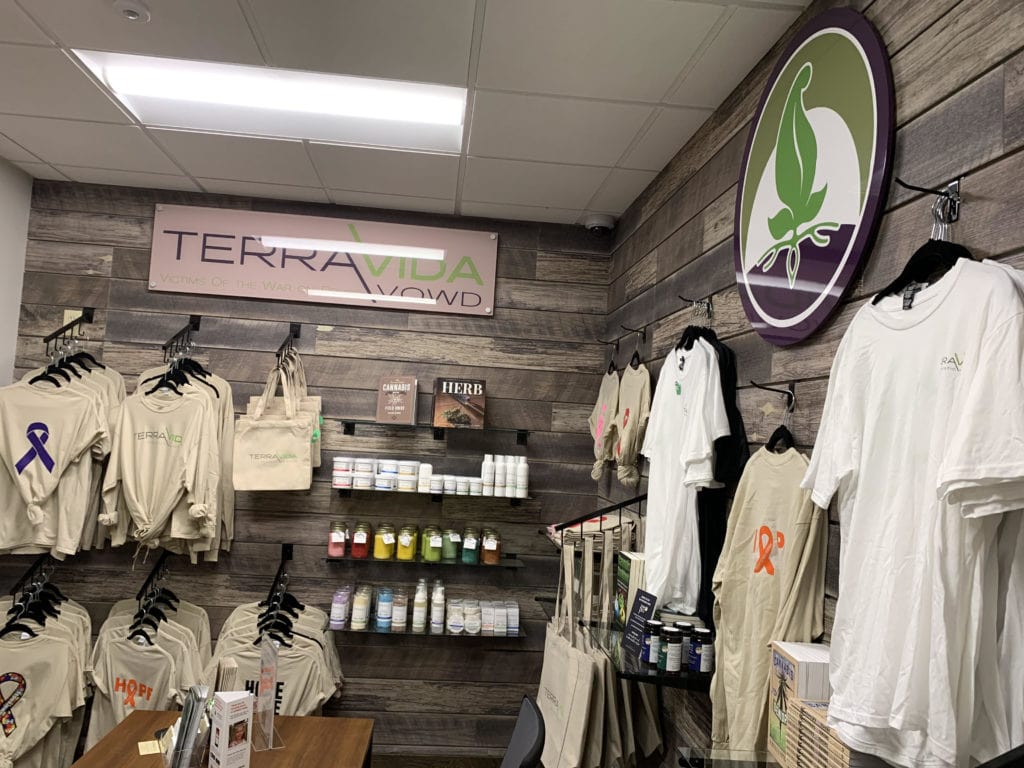
Near wall: Carved HDU sign panel.
Considerations for material selection
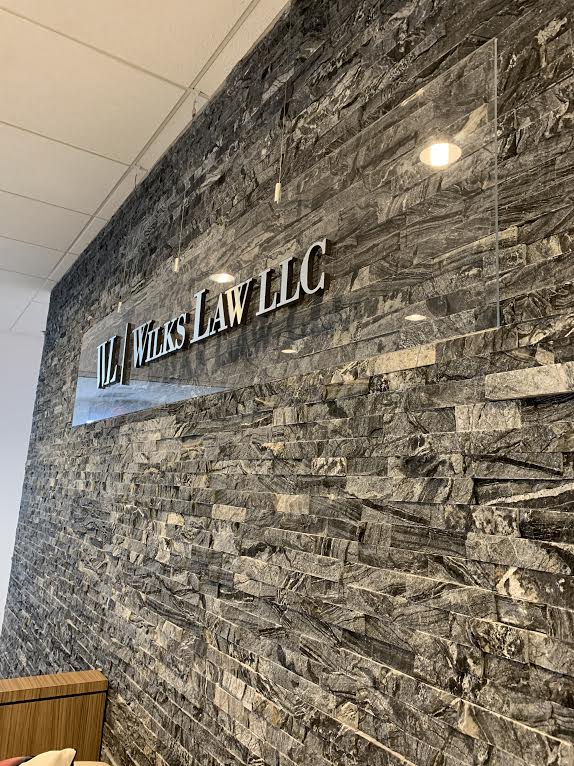
MDO– Being made of wood, this material is very sturdy. However, it will soak in water over time and start to warp and deteriorate. For long-term signage, this would not be the first choice unless budgetary restrictions come into play.
Aluminum – Aluminum has unsurpassed durability, excellent fabrication properties, and many finishing options and products. That said, aluminum is one of the more expensive options.
High-Density-Urethane (HDU) – Similar to aluminum, HDU materials have excellent durability. That said, moderate strength limits this material for unsupported spans. It works great for carved signs and provides a very nice finish.
Aluminum Composites – Contrary to standard aluminum, composite materials provide strength and are lightweight. They typically work best for panel-type signs but can extend much further.
Acrylic – Acrylic material has a great finish and good exterior durability. This material is the standard for illuminated signs.
PVC – PVC has excellent exterior durability, and good strength and can be carved. Great for panel-type signs.
Magnetic and banner materials as well as posterboard are best for short-term signage.
While the reality is that these options only cover a narrow section of the options available, we have made a point to cover the true workhorses of the sign industry. Choosing a material for your sign projects shouldn’t be a headache. While we hope this overview helps you approach the topic of sign materials with more confidence, we are here to help guide you through the process.
If you are considering a new sign for your business, give the experts at Paramount Signs a call. We are here to help.
Remember, “getting you noticed is Paramount”
